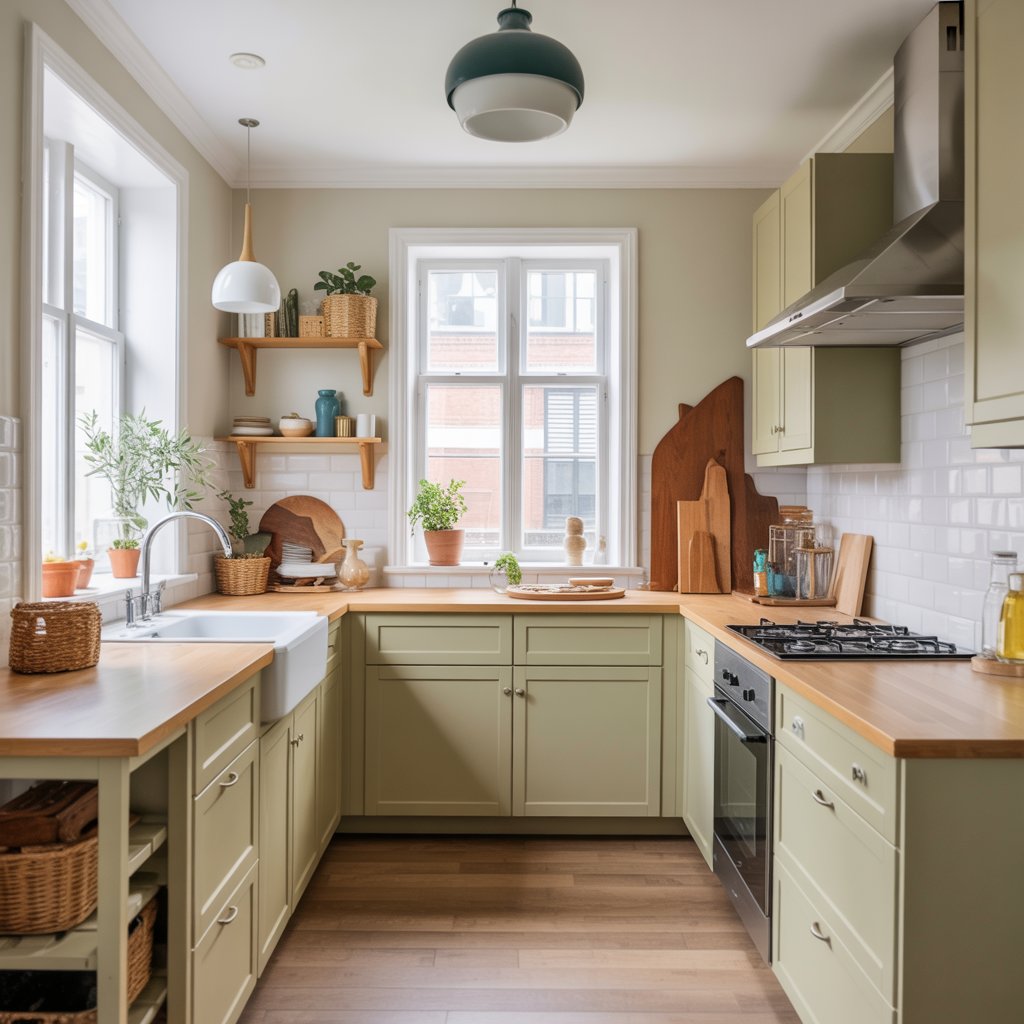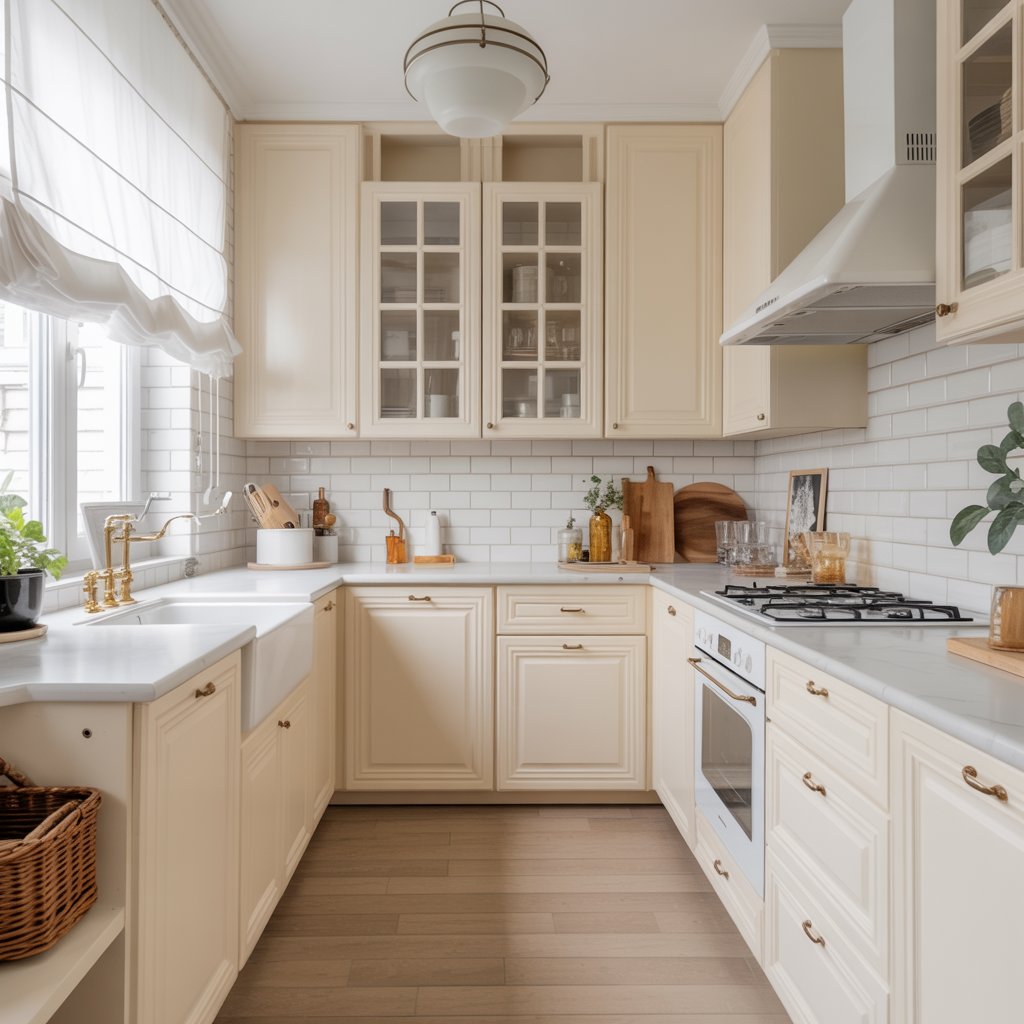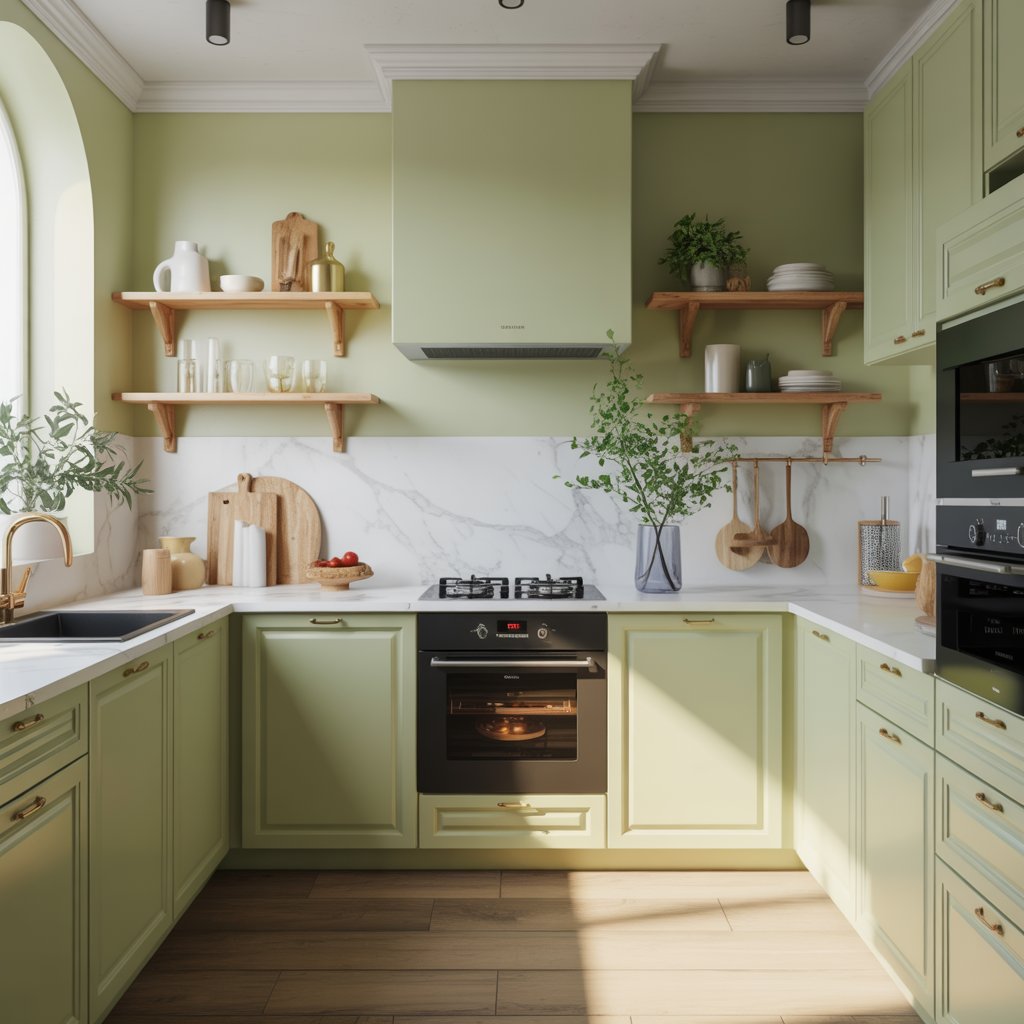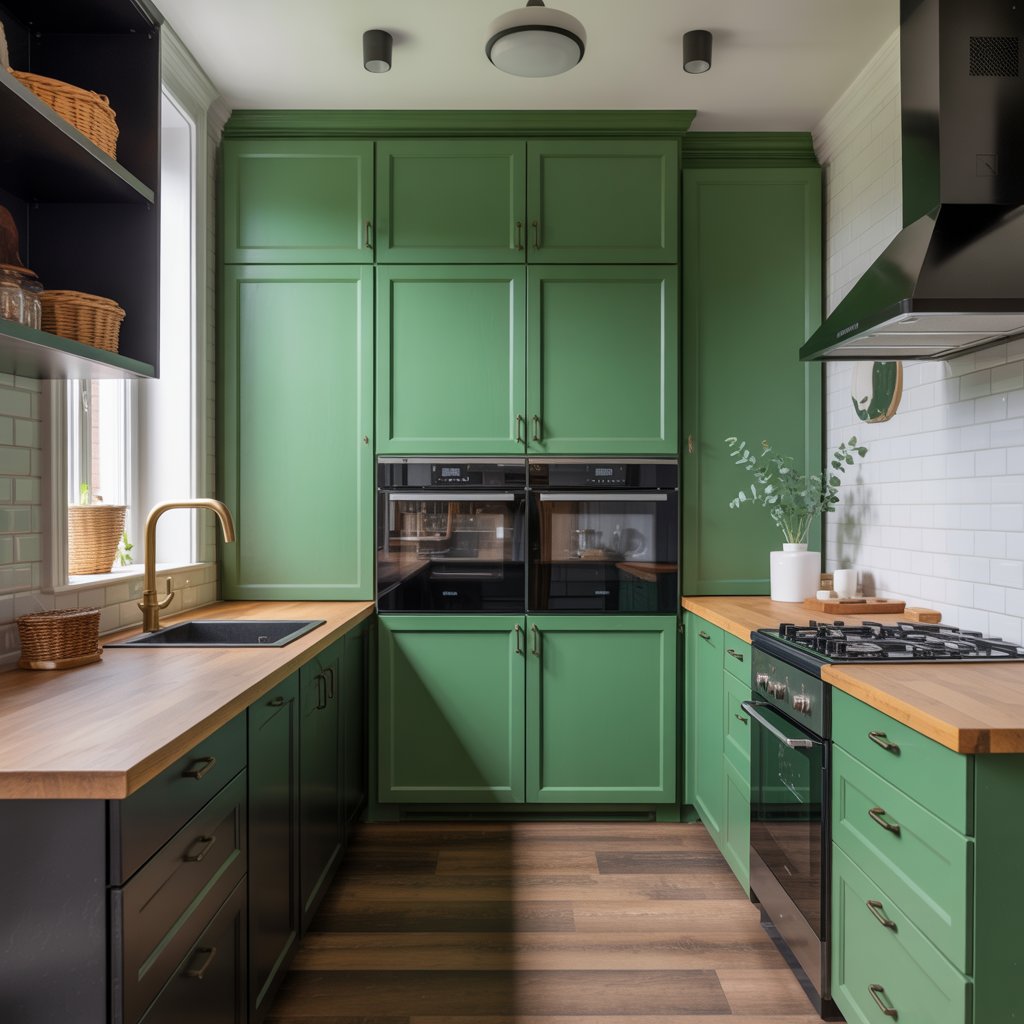Creating a stylish small kitchen begins with mastering color. In tight quarters, every shade matters—subtle neutrals can calm and widen, while bold contrasts inject energy and personality.
It’s not just about looks; the right palette enhances flow, defines space, and tricks the eye into seeing more room. A dash of daring, a whisper of warmth your kitchen can shine without feeling crowded.
Curious how color can transform your compact space? Explore these curated color ideas made just for small kitchens.
Why Color Matters in Small Kitchens

Color influences how spacious and welcoming a kitchen feels. Light colors reflect natural light, creating an airy atmosphere, while darker hues add depth and sophistication when used strategically.
The goal is to balance brightness and contrast to avoid making the space feel cramped or cluttered. In 2025, the trend leans towards soft neutrals, nature-inspired tones, and bold accents that bring personality without overwhelming compact layouts.
Best Colors for Small Kitchens
1. Light and Bright Neutrals

White and similar neutral tones remain the top choice for small kitchens due to their exceptional light-reflecting qualities.
Whites, creams, and soft ivories open up the space visually, making it appear larger and cleaner. These shades provide a fresh, timeless look and serve as a perfect backdrop for adding colorful accents or natural textures like wood and brass.
For example, pearly whites and snow-colored whites create a modern, minimalist feel that enhances brightness and openness. Using a monochromatic palette or high-contrast combinations like black and white can further reduce visual clutter and define kitchen elements clearly, adding to the sense of spaciousness.
2. Warm Yellows

Yellow is a surprisingly effective color for small kitchens, especially warm and mellow shades like canary, ochre, or honey tones. These hues reflect light warmly, transforming the kitchen into a sunny, cheerful spot.
Yellow adds vibrancy and energy without overwhelming the space, making it a popular trend . To balance the brightness, pair yellow walls with pale cabinetry or natural wood finishes and incorporate open shelving to maintain an airy feel. This approach creates a cozy yet expansive atmosphere, perfect for compact kitchens that need a lively touch.
3. Soft Greens and Blues

Nature-inspired colors such as pale sage green, mint green, and dusty blue are gaining popularity for small kitchens. These calming hues bring a fresh, serene vibe that enhances the kitchen’s ambiance without shrinking the space visually.
Sage green paired with creamy whites and gold accents can create a sophisticated, earthy look, while dusty blue combined with matte black and marble adds a modern, elegant touch. These colors work well in kitchens with good natural light and can be used on walls, cabinets, or backsplashes to add subtle personality.
4. Bold Accents and Dark Contrasts

While light colors dominate, incorporating bold accents or dark shades strategically can add depth and interest.
Emerald green cabinetry or acidic kelly green walls can energize a small kitchen, especially when balanced with neutral or metallic elements like brass or stone countertops.
Dark charcoal or matte black details on handles, fixtures, or lower cabinets create a striking contrast that visually anchors the space without making it feel cramped. The key is to use these colors sparingly and thoughtfully to avoid overwhelming the room.
Tips for Choosing the Right Color

- Consider your kitchen’s natural light: North-facing kitchens benefit from warmer tones to offset cooler light, while south-facing kitchens can handle cooler shades like pale blue or gray.
- Use light-colored walls and ceilings to reflect light and create height.
- Try two-tone cabinetry to break up the space visually and add dimension.
- Matte finishes and soft textures are preferred in 2025 for a modern, smooth look that doesn’t reflect too much glare.
- Incorporate textured tiles, brushed metals, and wood grains to add depth without clutter.
How to Choose the Perfect Color for Your Small Kitchen

- Consider Lighting: Lighter shades work best in kitchens with limited natural light, while deeper hues can add contrast in well-lit spaces.
- Match Your Style: Choose colors that complement your kitchen’s cabinetry, countertops, and overall decor style—whether modern, farmhouse, or classic.
- Use Accents Wisely: Incorporate warm wood tones, metallic hardware, or matte black fixtures to enhance your chosen color and tie the look together.
Conclusion
Selecting the ideal color for a small kitchen is about balancing light, space, and personality. Light neutrals like white and cream remain the safest bets for making a kitchen feel larger and brighter, but warm yellows, soft greens, and bold accents can inject life and style into compact spaces.
By considering your kitchen’s lighting and layout, and using color strategically, you can create a small kitchen that feels spacious, functional, and uniquely yours.
Frequently Asked Questions
Q: Is white the best color for small kitchens?
A: Yes, white and similar light neutrals are excellent for small kitchens because they reflect light and create a sense of openness, making the space feel larger and brighter.
Q: Can I use dark colors in a small kitchen?
A: Yes, but use dark colors as accents or on lower cabinets to add depth without overwhelming the space. Pairing dark shades with light neutrals helps maintain balance.
Q: Are bold colors suitable for small kitchens?
A: Bold colors like emerald green or kelly green can work well if used thoughtfully, such as on cabinetry or an accent wall, combined with neutral tones to prevent the space from feeling cramped.
Q: What finish is best for small kitchen paint?
A: Matte finishes are trending in 2025 for small kitchens as they provide a smooth, modern look without excessive glare, which can be distracting in compact spaces.
Q: How can I make a small kitchen feel cozier with color?
A: Warm tones like mellow yellow or earthy greens can create a cozy, inviting atmosphere while still enhancing the sense of space if balanced with lighter cabinetry and open shelving
